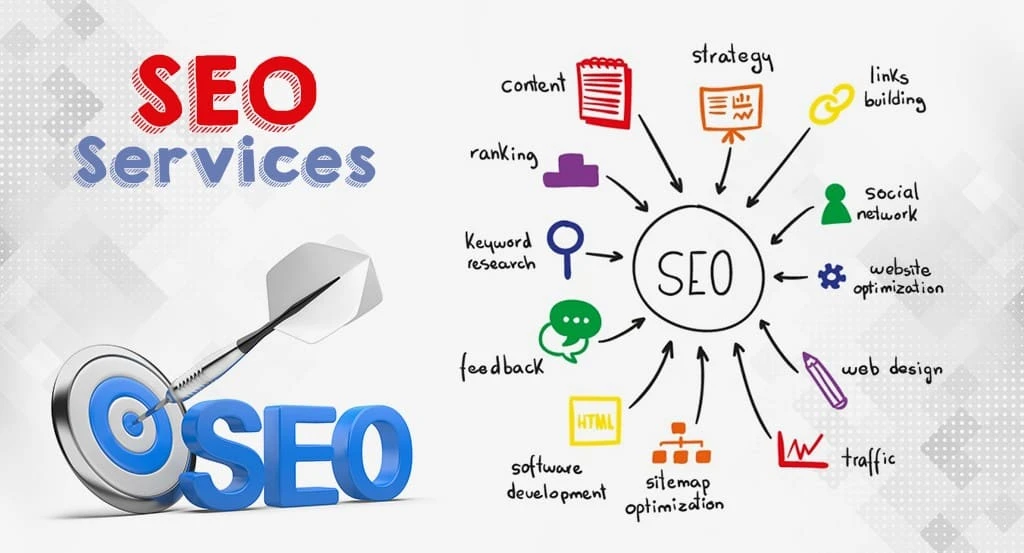When it comes to search engine optimization (SEO), “more” is usually the goal. More attention to detail. More backlinks. More traffic. More value for readers. More targeted keywords. You get the idea.
So, how do you make more happen? It starts with strategic SEO workflow management.
Most online sales begin in the search box. However, with a whopping 96.55% of pages seeing zero traffic from Google, you’re going to have to think beyond the basics if you want to make an impact with your SEO efforts.
Read on to learn how an SEO workflow can make all the difference for your website, including what it is, why it’s important, and four types of workflows that can help you get the ball rolling.
What is an SEO Workflow?
An SEO workflow is a predetermined set of steps that your marketing team takes to complete an SEO-related task.
Key to effective SEO workflow management is dividing up each task into multiple, manageable steps. These steps are organized in the order they need to be completed, with the successful completion of one step triggering the start of the next.
SEO workflows can be managed by individuals or teams depending on your organization’s size. They can also be designed in a multitude of ways (more on those below), with lots of flexibility for creating an SEO workflow that’s geared toward your unique goals and internal practices.
Why SEO Workflow Management Should Be a Priority
There are a lot of unknowns in the world of SEO. An SEO workflow helps you take control where you can, providing you with a predictable process for getting from point A to point B and beyond with your search engine initiatives.
Here’s a look at some of the benefits of an SEO workflow, from greater efficiency to better use of your time and resources.
- It provides you with clearly defined goals. If you don’t know where you’re heading, you won’t know how to get there. An SEO workflow forces you to define your goals clearly and concisely, and ensures your entire team is on the same page with what you’re trying to achieve.
- It streamlines your processes. By breaking down tasks into their component parts, you take a lot of the guesswork out of how to move forward with your SEO efforts. You’re also able to pinpoint hurdles before they slow you down, working in time-saving solutions and analytic tools from the get-go instead of trying to integrate them later on.
- It allows for constant oversight of progress. With an SEO workflow, you’ll always know where you are and what needs to happen next. This is a huge advantage, especially when you’ve got several balls in the air at once.
- It helps you make the most of available resources. Track your budget with ease and make sure you’re not wasting time or energy on dead-end tasks. A well-run workflow helps you optimize resource usage and is also vital in setting (and sticking to) a realistic budget for your SEO campaigns.
From small but important steps like keyword research to complex challenges like technical SEO, a workflow makes it so you’re not going in blind on your must-do SEO tasks. And along the way, it helps you keep up with changes in industry best practices and search algorithms – all good things for getting better outcomes out of your SEO initiatives.
4 Types of SEO Workflows to Try Out
Each SEO task you want to complete should have its own workflow. Think of these workflows as step-by-step guides for reaching your end goals, with sustainable, actionable breakdowns for completing one or more essential SEO to-dos.
Here are some ideas for SEO workflows you can create.
1. SEO Workflows for Creating Content
Modern businesses need to be publishing powerhouses in addition to experts in their own product or service industry. That’s a lot to ask – and a lot to manage.
An SEO workflow for content production lays out the tasks and responsibilities associated with churning out fresh content, and can be optimized based on the type of content you’re creating and/or where you are in the creation process.
Example:
- Pick a topic
- Identify your target audience
- Research relevant keywords
- Create a content brief
- Assign a writer
- Write and edit the piece
- Complete on-page optimization through things like images, metadata, and linking
- Do a final edit
- Publish
Keep in mind that you may want to break down certain steps into smaller sub-steps. This can be particularly useful for a task like keyword research, which requires several unique tactics in order to get things right.
2. SEO Workflows for Link Building
There are a lot of moving parts to link building, which is why so many companies rely on agencies like ours to offer this SEO task as part of their blog management services.
If you’re doing it on your own, a workflow can be integral to making sure you’re properly using links on and off your page, and that the links you’re building are pulling their weight in terms of boosting site relevancy, authority, and expertise.
There are various link building strategies, so create a workflow for each one you’re pursuing. If you’re aiming to establish links through guest posting, for example, you’ll want to identify relevant sites, reach out for opportunities, write high-quality content, and submit it for approval. And don’t forget post-publication steps like tracking analytics and checking to see if your links are paying off.
3. SEO Workflows for Researching Keywords
Keywords are the backbone of SEO, since they give search engines the context they need to place your page in front of the right audience. SEO workflow management in this area is intended to help you hone in on the right keywords and phrases, as well as allow you to gather insight regarding keyword volume and competitiveness.
Example:
- Make a list of broad terms related to your industry and your product or service
- Rank the utility of each keyword using a keyword research tool, which will tell you things like how often the term is being searched
- Refine your list to include the highest-value keywords for your business
- Map out a plan for using these terms in your content
Again, you’ll probably end up breaking down one or more steps into smaller steps. You may also add on other steps that you find useful, like researching competitor keywords or optimizing your keywords for local search.
4. SEO Workflows for Generating New Leads
SEO plays a huge role in lead generation, especially in building brand awareness and increasing website visibility.
Workflows simplify the process of SEO lead generation, and can be a big boon if you’re used to the traditional playbook for finding new customers or if you’re expanding into a new market. They can also be integral to troubleshooting issues like pulling in too many low-quality leads and not enough high-quality ones.
Example:
- Identify your core audience
- Create customer personas
- Research keywords these customers may be searching
- Create content that uses these keywords
- Add forms to your site to collect lead contact information
From there, you can make separate workflows to dictate lead outreach and how you intend to keep the conversation going.
Nailing the SEO Process: Steps to Workflow Success
As with any SEO process, steps you take to reach your goals vary based on what you’re trying to do and how you’re going about it. However, there is a blueprint that you can – and should – follow when creating your SEO workflows.
Step 1: Goal Setting – Be as specific as you can with what you’re trying to accomplish through each workflow. Instead of “create more content,” for example, you may say you want to “create 5 new blog posts each month,” and then go from there.
Step 2: Organize Your Team – Each step in a workflow should have a clear assignee. Beyond that, check in with your team regularly, and have a point person who’s responsible for overseeing the workflow from start to finish.
Step 3: Track Results – A workflow is only as good as the results it produces. Adapt your SEO workflows as needed to fill in gaps or overcome obstacles, and keep an eye on analytics so you can be sure all that work is actually getting you where you’re trying to go.
For More Support, Bring in the Pros
SEO workflow management can make or break your overall search engine success. That being said, not every organization has the time or people-power to execute the quality of SEO workflows needed for outstanding results.
If you need help managing workflows, or if you’d rather hand off certain SEO tasks entirely, SEO Brand is here to help. Learn about our SEO content writing services, linking services, ecommerce SEO services, and more, and get in touch for professional support managing the day-to-day tasks of a killer SEO plan.



